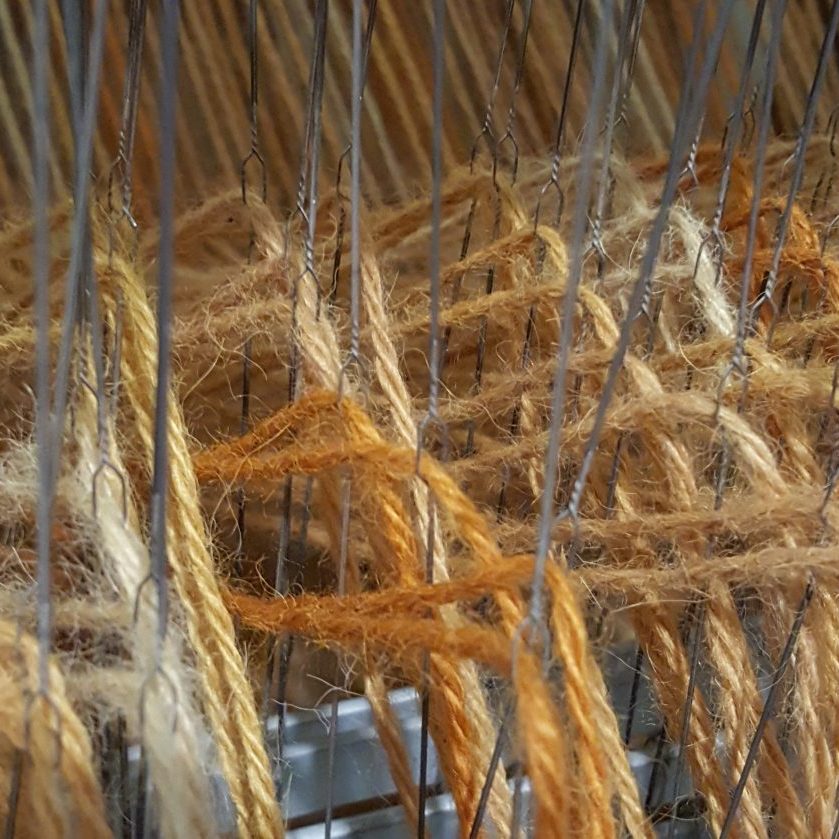Coreopsis grandiflora Early Sunrise, Mädchenaugen
A quick search and it seems that apart from the English tickseed, only the Germans have another name for this plant, and I know which one I prefer…
An attempt at growing C. tinctoria from seed (from two different sources) came to naught last year, so I bought a punnet of grandiflora seedlings. They survived the hottest days well with a constant display of cheerful blooms, and have started layering themselves so that I should have double the amount next year. I’ll still give the tinctoria seeds another try or two.
 The result of the dyepot were to be expected, and after getting so many muted shades from eucalypts, the bold oranges and red were a welcome change – and not unexpected, either, from this plant family. Different to dahlias? I’d say about the same. As for production, I’d have to wait until I had an equal amount of both plants, but that’s not what it’s all about at present.
The result of the dyepot were to be expected, and after getting so many muted shades from eucalypts, the bold oranges and red were a welcome change – and not unexpected, either, from this plant family. Different to dahlias? I’d say about the same. As for production, I’d have to wait until I had an equal amount of both plants, but that’s not what it’s all about at present.

 and. As a child with a thirst for natural history (is it still called that?) and a small but highly informative collection of nature books, I stood gaping at this tall grass with purple flowers – all very exotic. If memory serves correctly, I took a couple of flowering heads home, but the purple didn’t last. I can’t remember where it was, but have a lot of fond and grateful memories of day trips in to the countryside where there was always a new discovery.
and. As a child with a thirst for natural history (is it still called that?) and a small but highly informative collection of nature books, I stood gaping at this tall grass with purple flowers – all very exotic. If memory serves correctly, I took a couple of flowering heads home, but the purple didn’t last. I can’t remember where it was, but have a lot of fond and grateful memories of day trips in to the countryside where there was always a new discovery.